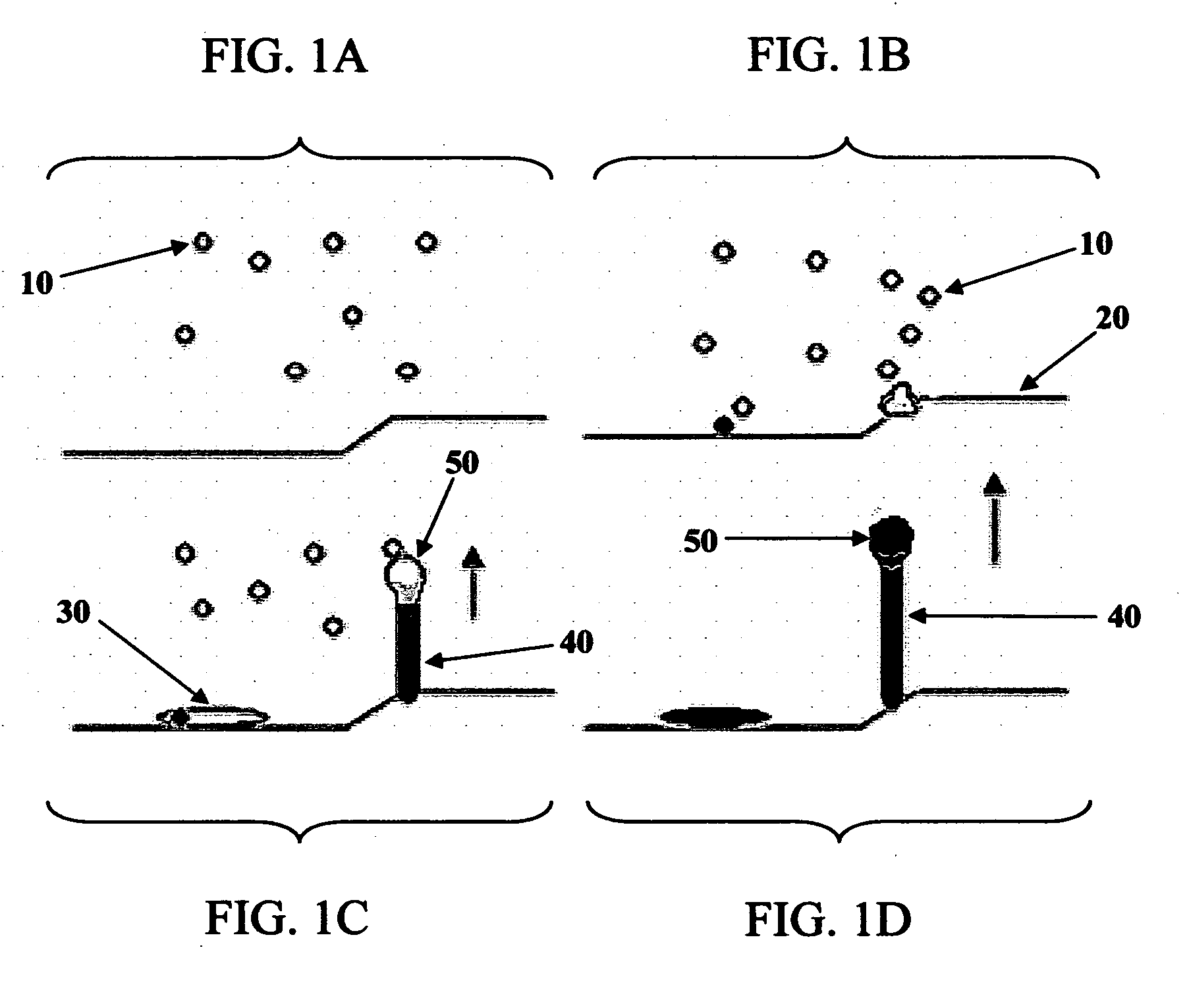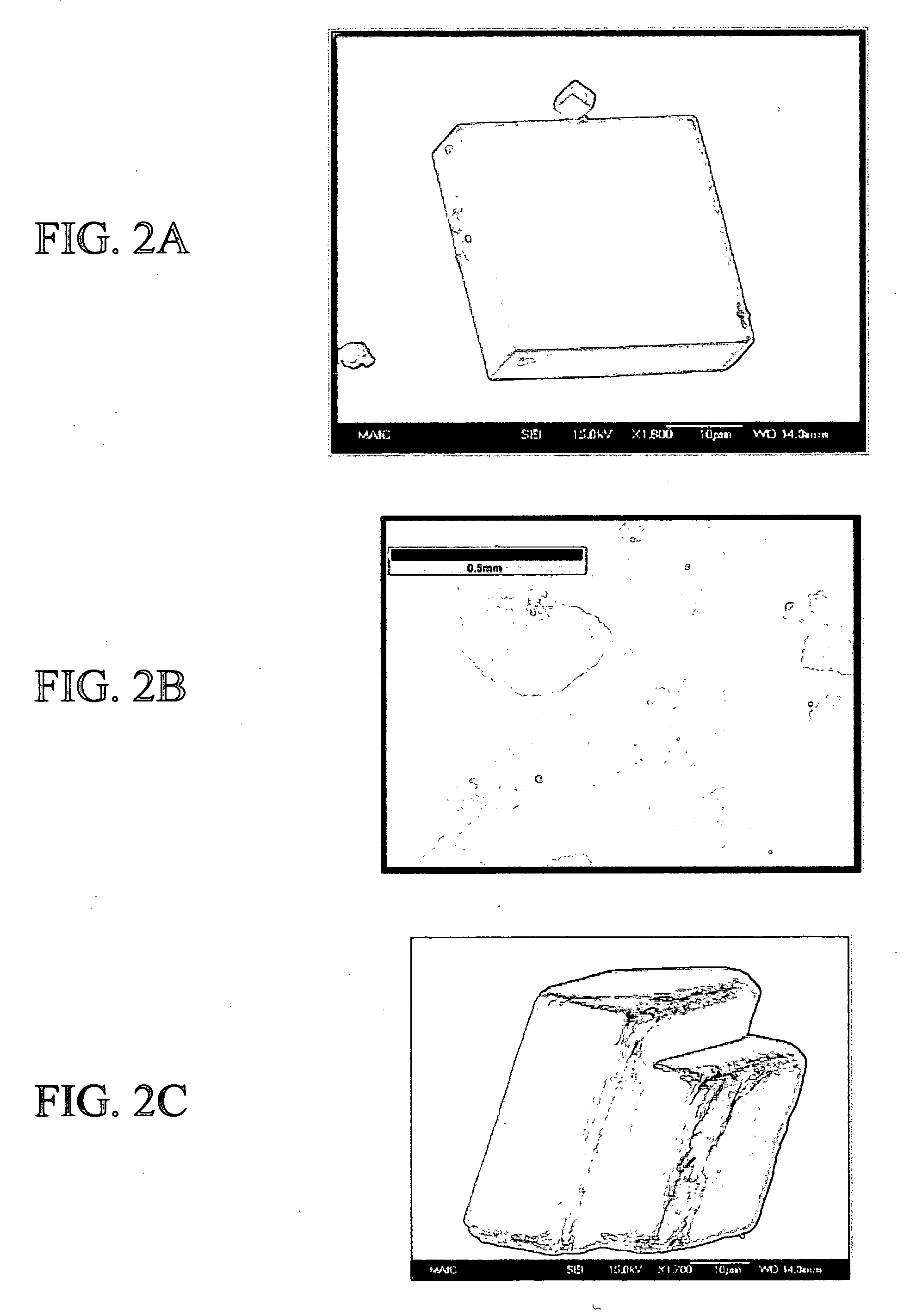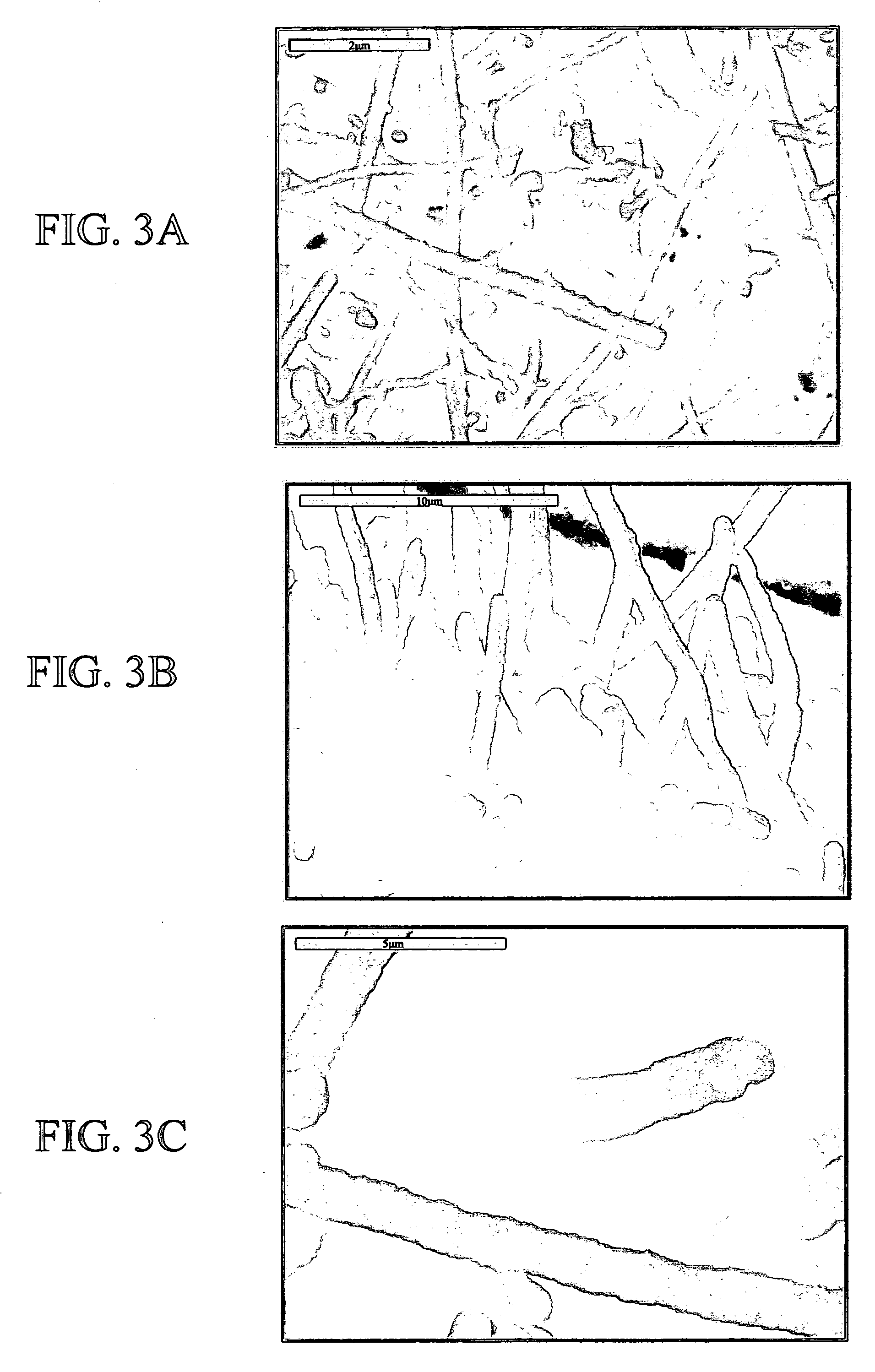Fibrous minerals, methods for their production using a solution-precursor-solid mechanism, and methods of use
a technology of precursor and solid mechanism, which is applied in the field of fibrous minerals and methods for their production, can solve the problems of lack of toughness, brittleness and prone to cracking, and no successful imitation of bone composite or microstructure, etc., and achieves the effect of high aspect ratio
- Summary
- Abstract
- Description
- Claims
- Application Information
AI Technical Summary
Problems solved by technology
Method used
Image
Examples
example 1
[0062] Fibrous calcium carbonate (CaCO3 / calcite) crystals 100-800 nm in diameter were produced at temperatures as low as 4° C. The calcium carbonate fibers were deposited onto calcite rhombs using a mineralization process involving the inclusion of short-chained acidic polymers (e.g., polyaspartic acid or polyacrylic acid) to a supersaturated calcium carbonate system to induce an amorphous liquid-phase precursor. This latter process, documented in the literature, is known as the polymer-induced liquid-precursor (PILP) process. In previous reports, the present inventors have demonstrated that when the PILP phase is deposited onto an amorphous glass substrate, continuous thin films (˜500 nm thick) of CaCO3 are formed (Gower, L. B. and D. J. Odom [2000] J. Cryst. Grow., 210(4):719-734). Organic substrates, such as type-I collagen, have also been used on which to deposit the PILP phase, resulting in intrafibrillarly mineralized organic / mineral composites (Olszta...
example 2
Hydroxyapatite (HA) Fibers
[0066] Enamel, the hardest known vertebrate tissue, is comprised of “rods” of hydroxyapatite tightly packed together in an organized array. Enamel and dentin share a unique starting point, the dentino-enamel junction (DEJ), with the enamel growing away from the DEJ to serve as the mastication surface, and the dentin growing in towards the pulp. While researchers agree that dentine is the first to appear, there is still debate as to whether the enamel epitaxially nucleates from the dentine surface (G. W. Bernard, Ultrastructural observations of initial calcification in dentin and enamel. Journal of Ultrastructure Research 41, 1 (1972).; E. J. Reith, Early stage of amelogenesis as observed in molar teeth of Yorun rats. Journal of Ultrastructure Research 17, 503 (1967).; P. Bodier-Houlle, P. Steuer, J. M. Meyer, L. Bigeard, F. J. G. Cuisinier, High-resolution electron-microscopic study of the relationship between human enamel and dentin crystals at the dentin...
PUM
| Property | Measurement | Unit |
|---|---|---|
| temperature | aaaaa | aaaaa |
| aspect ratio | aaaaa | aaaaa |
| aspect ratio | aaaaa | aaaaa |
Abstract
Description
Claims
Application Information
 Login to View More
Login to View More - R&D
- Intellectual Property
- Life Sciences
- Materials
- Tech Scout
- Unparalleled Data Quality
- Higher Quality Content
- 60% Fewer Hallucinations
Browse by: Latest US Patents, China's latest patents, Technical Efficacy Thesaurus, Application Domain, Technology Topic, Popular Technical Reports.
© 2025 PatSnap. All rights reserved.Legal|Privacy policy|Modern Slavery Act Transparency Statement|Sitemap|About US| Contact US: help@patsnap.com



